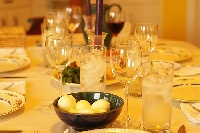
The tradition of how Passover is celebrated is passed from one generation on
One of the Jewish faith’s most important religious festivals, Passover dates back to 1300 BC. Known as Pesach, in Hebrew, the week-long feast celebrates the exodus of the slave Jews from Egyptian lands. Led by Moses out of a tyrannical and oppressive rule, the Jewish peoples — according to the Hebrew Bible — struggled through the Sinai desert for 40 years to set foot in Canaan, their true ancestral land.
Since approximately 1300 BC, the week-long festivities have been celebrated by Jews the world over. But, to many, it’s a traditional steeped in mystery. In essence, what is the history of this traditional celebration? And how is passover celebrated the world over? What symbols, Passover objects and special items are associated with the observance? Well, read on to find out!
History
For a solid history on the subject matter — including the holidays’ origins, Moses’ role in the liberation of the Jews from slavery in Egypt, and biblical stories to boot — head over to the BBC.co.uk page. In addition, the History.com webpage sheds light on its epic story, the true historical accuracy of perceived events, and overall traditions of Passover.
The Celebration
Depending upon one’s location throughout the world, there may be different ways to celebrate. For example, in Israel:
- The feast will last seven days in total.
- During this week-long event, the first and seventh day are meant to be days of rest, also known as yom tov.
- Days two through six — the middle sections/days of the festival — are meant as intermediate holidays.
In areas outside of Israel, the celebration consists of:
- In areas outside of Jewish state, the festival will last eight days in length.
- The first two days — as well as the last two days — are meant to be full days of rest for participants.
In essence, the Torah explicitly states that Passover should be celebrated for seven days total. But many practicing Jews at the time lived outside of Israel and failed to get word on what specific day to begin the festivities. Thus, they added an extra day just in case.
Preparations for the Feast
An all-important aspect of the pre-festival preparation is that of removing all leavened food products (chametz) from the household. Not only are these products to be removed, but they are to be abstained from during the seven or eight day period. So, instead of bread, Jews will dine upon a flatbread known as matzo.
In no shape or form will chametz be allowed within — or around — the home during these days. To do without this is to, in part, cleanse the soul of both arrogance and pride.
The Seder
So, how is passover celebrated once the preparations have been made? The seder takes place during the initial two nights of the festival. The word seder means “order,” and thus, each of the ceremonies is arranged in a specific way; special plates and cutlery are used only for these traditional celebrations.
It’s during the meal when the story of the exodus from Egypt is told (read aloud from a book known as the Haggadah), rituals are performed, and foods are served which have specific significance to the overall exodus story. These include:
- Matzo
- Lamb shankbone
- Fruit
- Nuts
- Wine, known as charoset
- Bitter herbs
Other items which may spring up during the seder are gefilte fish (poached fish patties), matzo kugel (pudding), and chicken soup replete with matzo balls.
Youth Involvement
Children play a large — and important — role in these specific traditions. The youngest child will ask the four questions taken from the Haggadah:
- Why do we eat unleavened bread?
- Why do we eat bitter herbs?
- Why do we dip our food in liquid?
- Why do we eat in a reclining position?
The father will normally answer these questions to help show why this night is different from the rest. In addition, children will participate in a traditional hunt for a hidden piece of matzo, known as the afikomen. Thus, Jewish children will play a large role in the proceedings.
Above photo attributed to AlphaTangoBravo/Adam Baker
